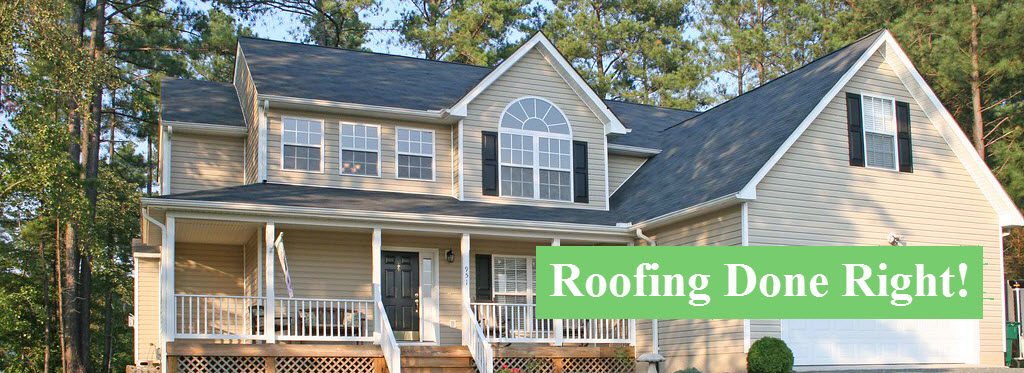Because of their reduced cost and simple installation Asphalt shingles are a roof covering staple in North America. Currently they outpace all other roof covering materials by a considerable margin. Asphalt shingles are manufactured in 2 different kinds: three-tab and architectural.
Three-tab and Architectural Shingles Differences
Three-tab shingles are distinguished by cutouts– tabs– made along their long lower edge. This creates the illusion that “each tile looks like three separate items when installed, yet it’s just one.” Three-tab tiles have been around a long period of time and are still one of the most economical and popular tiles today, given their ease of setup and large range of colors. However, during the 1980s, technical developments as well as changing consumer tastes took asphalt roof tiles to an entire brand-new degree, leading to building laminated shingles. The term “laminated” means that the tile’s construction consists of 2 or even more fundamental tiles laminated or bonded with each other.
 Both laminated roof shingles as well as conventional 3-tab shingles offer efficient defense against wind. They likewise, defend against damaging water infiltration from wind-driven rainfall, offering you improved defense against the elements. In the roof market, laminated shingles tiles are more often described as being “architectural” because they’re specifically engineered to offer dimension to the roof covering by way of each individual roof shingles’ shape, cut and thickness. Therefore, the movement towards 3-tabs to architectural laminated tiles was basically for aesthetic purposes.
Both laminated roof shingles as well as conventional 3-tab shingles offer efficient defense against wind. They likewise, defend against damaging water infiltration from wind-driven rainfall, offering you improved defense against the elements. In the roof market, laminated shingles tiles are more often described as being “architectural” because they’re specifically engineered to offer dimension to the roof covering by way of each individual roof shingles’ shape, cut and thickness. Therefore, the movement towards 3-tabs to architectural laminated tiles was basically for aesthetic purposes.
Architectural asphalt roof shingles can be made to mimic the remarkable, popular look of authentic cedar or all-natural slate ceramic tiles without the setup, weight, maintenance and flammability fears. In addition, some suppliers’ lines of architectural laminated tiles are readily available in a range of colors. Nonetheless, those lines that are developed to simulate the look of authentic timber shakes or natural slate ceramic tiles will always be limited to the very same color blends as those located in nature; e.g., natural or reddish browns, light as well as dark variants of grey to black.
Architectural laminated shingles are frequently called “high-definition” because of the depth and contour of each shingle. Some manufacturers utilize angled cuts while others make use of a straight cut which boosts the perception of depth as well as the appearance of a shake or tile roof covering. Although the difference between three-tab and architectural shingles seems superficial, roofers consider the latter a much more premium roof covering product because of price difference. Architectural shingles can set you back 20% to 40% percent more than three-tab roof shingles– a difference that can add up to $1500 more for larger roof coverings.
So are architectural roof shingles truly worth the added price? Some roofers say yes and here’s why:
Aesthetic Appeal
Architectural shingles can be made to resemble premium roof covering materials like cedar and also slate and are much better able to conceal flaws on the roof covering surface area.
Longevity
Architectural shingles are almost two times as thick as three-tab roof shingles and therefore extra sturdy and less susceptible to crinkling.
Weight and wind resistance
Three-tab tiles normally rate at 240 lbs per square and are ranked for wind acceleration to 60 miles per hour; architectural tiles rate at 340-440 lbs per square but are ranked for wind durability 80-120 mph.
Producer’s service warranties
25 years for three-tab, 40 to 50 years for architectural.
So is more affordable better? The response will certainly depend upon how you look at it. Three-tab roof shingles are cheaper upfront, but over the course of your roofing’s lifetime, Architectural roof shingles can cost less.
When choosing a roof always keep in mind that the main purpose of any roof covering is to shield your household, your home and its valuable materials from any types of weather conditions. Your decision, therefore, should be based on the environment you live in as well as the architectural style of your home. How much time you reside in your house and what the neighboring houses look like should also be considered and last but not least, your budget.

